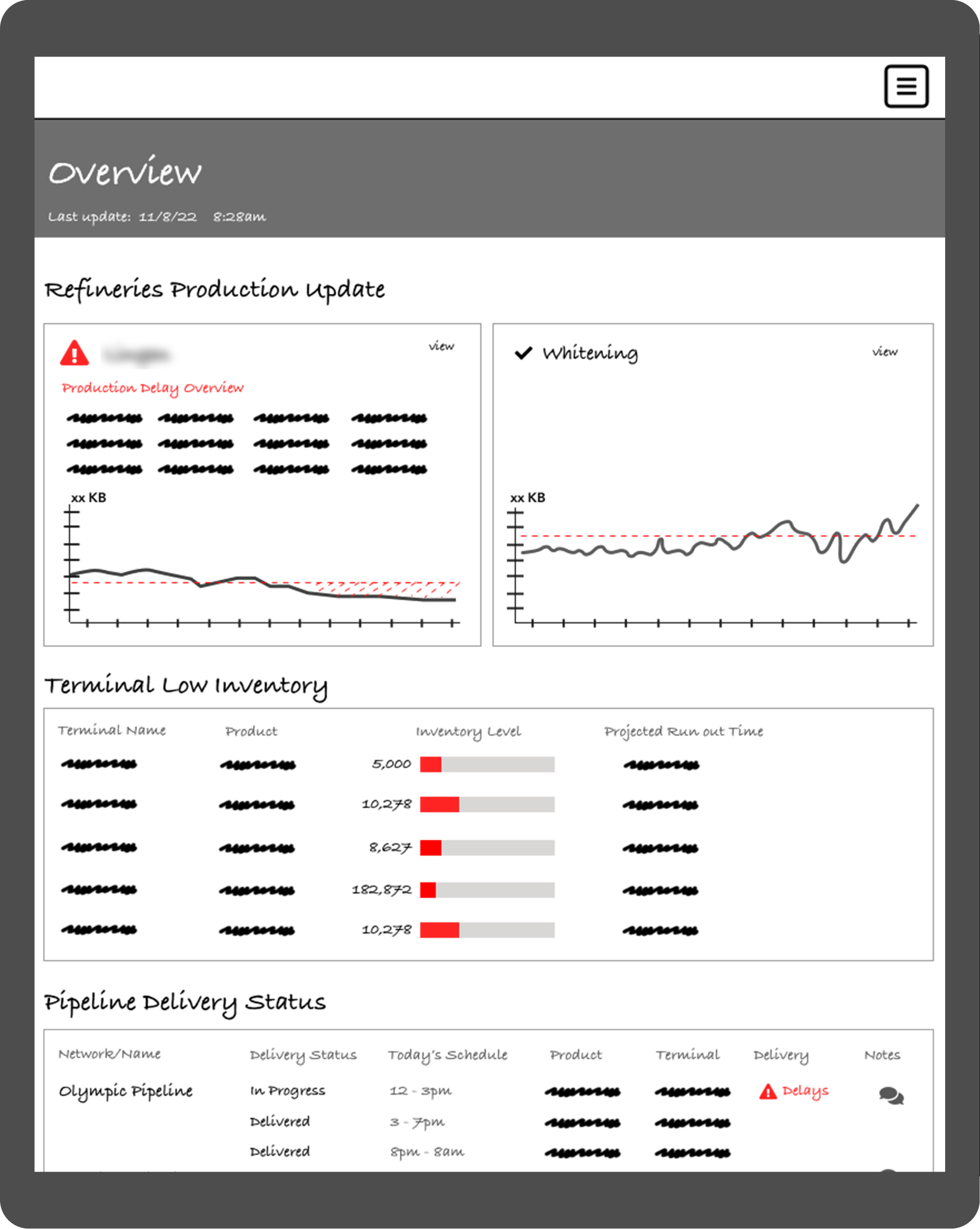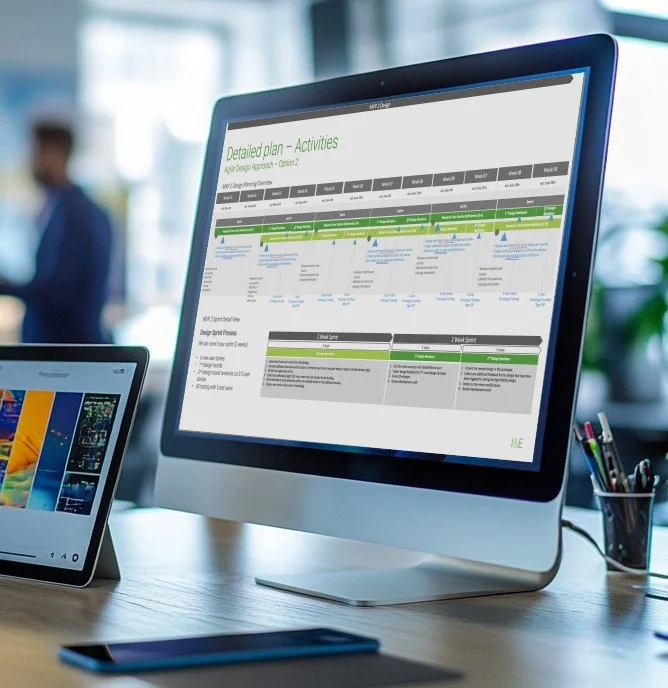Innovation
Real-Time Supply Management
Oil and Gas Industry
The Integrated Oil and Gas company, focused on distributing raw elements from oil refineries to gas stations, is called the "Midstream." Midstream covers the sales process, scheduling, and distribution of fuel to terminals, and the ultimate delivery of fuel to retail stations via carrier pickups.
Midstream touches more than 15 business units, with roughly 33 teams supporting the various transactions. The teams are comprised of sales agents, customer support professionals, schedulers, traders for retail logistics, and other experts.

Business Challenge
Each team tracks and manages its transactions in home-built applications, Microsoft Excel sheets, and shared information via emails and phone calls. Changes are manually entered into the applications and shared documents.
The outcome of all of these manual processes is massive data inconsistencies and inaccuracies.
The data inconsistencies and fragmented application ecosystem have resulted in the Midstream business units struggling to generate accurate sales and production forecasts.
This inaccuracy made the efficient management of terminal supplies and on-time fuel delivery to retail stations extremely difficult.
Ultimately, business units were also concerned about the impact on customer retention because of potential supply shortages and delivery delays.
Please, note that graphics, charts and data on the page have been modified to maintain confidentiality agreements.
Defined the scope of the Supply Management application based on the Midstream Ecosystem.
The Ask
As part of the Digital Transformation initiative, the Midstream business units have been working with one of the four large consulting firms to assess how to streamline their business processes using a new, bespoke enterprise application.
The consultants recommended building a single Saas application with a single access point to streamline the features of other applications.
Uncovered and mapped unseen Midstream interdependencies for the first time in an Ecosystem Map.
New Application Business Impact
The new application would integrate data points from a vast array of internal and external data sources to track current inventory across terminals, identify supply and traffic issues, help carriers pick up fuel more efficiently, and ensure continuous fuel inventory at companies’ owned stations.
Driving Change: From Product-First to Design Thinking
Created a Practical Framework for Design Thinking in Product Development.
I started a conversation with the consultancy executive sponsor, the engagement lead, and the client’s business owner about a change in scope, and to run instead of an ideation workshop to interview potential end users and map their current as-is user journey.
Shifting Beliefs
Initially, the business owner and the engagement lead pushed back against changing the approach, but relented after I provided my reasoning.
They agreed to schedule an initial interview and allowed me to interview only two supply managers.
It was a revelation for the business owner and the consultants to listen in on the interviews.
The Impact of User Interview
Both parties from the interviews realised the process was different from what they had imagined and introduced a much more complex environment than they initially thought.
Online interview with the supply managers.
Defining Scope Through Jobs-to-Be-Done
Our limited findings from the initial two interviews provided enough information to create user stories for the product backlog using the Jobs-to-Be-Done Framework.
The interview resulted in approximately 65 user stories*, which may be unique to the two supply managers or may apply to the wider user base of supply managers across North America or the globe.
I invited additional stakeholders and supply managers to the next workshop to review the user stories I created based on the interviews together. I asked them to vote on how frequently and how applicable each story would be for them.
Based on the ranking, we identified a subset of user stories that would apply to a wider user base and would be potential candidates for the MVP.
*a small task a user may like to perform in an application
MVP Concept for the ApPLICATION
Initial low-fidelity design for a proof of concept.
Turning Insights Into Stakeholder Advocacy
The response was overwhelming, and both supply managers were amazed at how well these concepts would solve one of their current pain points. There were minor tweaks, but the two managers were astonished and pleasantly surprised.
In the initial interview, both supply managers provided me with essential insight.
After the presentation, they strongly supported my proposed Design Thinking approach.
I was still on thin ice with the business owner and the business consultancy to prove the value of Design Thinking and define the scope of the MVP.
I asked the business owner if we could mock up two designs for one of the identified user stories and show them to the supply managers.
Converted Dovetail.com user research insights into user stories in Excel
Creating the Product Backlog
We scaled up the initial research approach and interviewed the supply managers responsible for fuel delivery at the gas stations to understand the supply chain process.
Starting at the refineries, tracking the supply at the terminals, and ending up at the gas stations.
The user interviews helped us identify the core processes. I created the epics* and user stories for the various business units to create a more robust backlog on the Microsoft Azure Board.
*Collection of user stories representing an explicit piece of business or technical value
Team collaboration to move the user stories into Azure Board
Collaborating on the Release Schedule
Our team had a scrum master and a project but not a product manager to manage the product backlog based on business priorities.
In place of the product manager, I applied my knowledge from past projects and my (then) PMC III certification to collaborate with business analysts and engineers to select epics for each product release cycle.
Created the Lean UX Design Plan
Introducing Lean UX
Since we had very tight release cycles of three months, the designer and engineering team needed to run in a lean UX framework.
The framework would enable the team to adjust and pivot the designs based on data availability and user testing rather than relying on picture-perfect wireframes.
Winning Over the Teams
Hearing the supply managers’ feedback, the client business owner, the consultancy partner, and the engagement lead were convinced of the value of Design Thinking and a user-centric design approach.
I won the additional scope for an additional UX designer and UX engineer to start working on the project while slowly rolling off full-time and remaining as a supervising lead designer.

Successful Product Releases
The team rapidly developed the MVP within 12 weeks, which the client managers overwhelmingly saw as an improvement to their current application ecosystem in managing the supply for gas stations.
Our success enabled the client to release additional funding for the next product release, addressing other supply chain processes already captured in the product backlog.
Additionally, the client’s business owner, who oversaw our project, started advocating our approach to design thinking and lean UX to other business units and his supervisor. We provided demos to other business units where I explained our processes and challenges with the implementation, but also showed how fast we could launch an MVP compared to a traditional waterfall model.
“Client’s business owner started advocating our approach to design thinking and lean UX to other business units and his supervisor.”










